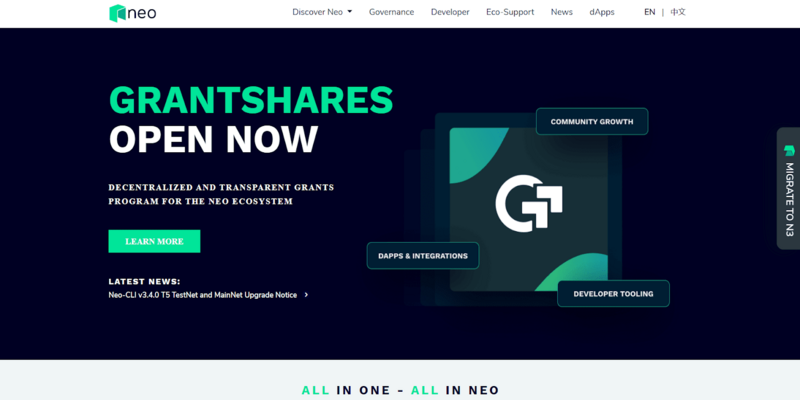The Top 7 Of The Most Successful ICOs Ever
There are hundreds of new cryptocurrencies being released every day, and although some may experience rapid growth like Bitcoin's, the great majority will fail. Is there a surefire way to ensure an ICO's success, then? We've compiled this list of "success" indicators in the order of their historical value growth rate as of the time of writing. Let's examine the seven most profitable ICOs to determine how the crypto industry's heavy hitters position themselves.
Here Are The Top 7 Of The Most Successful ICO’s Ever
NXT
NXT was an early, successful blockchain company. It debuted in September 2013 after an initial coin sale on the BitcoinTalk Forum raised about $16,800 in Bitcoin. The coin was developed as a blockchain platform to facilitate the deployment of private blockchain applications by enterprises, organizations, and financial institutions. At its initial coin offering (ICO), one NXT token was worth $0.0000168. At its all-time high of USD 2.15, the NXT coin represented a return on investment of 1,477,000%.
IOTA

Because of its innovative combination of blockchain technology with the Internet of Things, the IOTA project stands out among other blockchain initiatives. It is unique among cryptocurrencies because it does not employ the whole blockchain. Instead, it utilizes a brand-new Tangle technology, which eliminates the need for extra fees and allows for infinite scaling. Throughout December and November of 2015, it performed an initial coin offering as well as raised over $400,000. One billion IOTA tokens were sold at a price of less than $0.001 apiece during this period. Even though the USD 5.69 high point of the MIOTA coin was not exceptionally high compared to other ICOs, it nevertheless provided an ROI of 332,500% to its early investors.
Ethereum
Ethereum is likely the most well-known blockchain platform currently available. Vitalik Buterin unveiled the platform in 2013, intending to facilitate the development of smart contracts as well as distributed applications (DApps). Ether, Ethereum's native digital currency, has experienced meteoric growth since its initial coin offering (ICO) days due to the platform's potential across a wide range of businesses. In the first round of the ICO, which began in the summer of 2014, 11.9 million Ether tokens were sold, generating USD 16 million in a mere 42 days. When it launched, the price of one Ether token was USD 0.311.
NEO
Formerly known as AntShares, NEO is China's first publicly traded blockchain company. It's yet another DApp and innovative contract platform that lets users develop their tokens and "smart assets platforms." In October 2015, it launched its first ICO round, raising USD 550,000 by selling 17.5 million tickets. Before 2017, the coin was traded under the ticker ANS. However, that year, it underwent a rebranding and is now known as NEO. At its inception, one ANS/NEO token was worth around USD 0.032. In September 2016, the company held a second crowd sale to collect funds to expand its platform. $22.5 million worth of NEO tokens were sold, bringing in a total of $4.5 million. On January 15, 2018, NEO's price peaked at $196.85, yielding a return on investment (ROI) of 615,056.25% and serving as a model for how successful ICOs could be conducted in the future.
Spectrecoin
Proof-of-Stake (PoS) digital currency Spectrecoin prioritizes user privacy by allowing anonymous transactions. The introduction of cryptocurrency occurred before the end of 2016 when anonymity among digital currencies was only beginning to pique the interest of cryptocurrency traders. At its peak price of $6.56, XSPEC represented a return on investment of 655,900.00% from its beginning price of USD 0.001.
Stratis

Stratis is a BaaS (blockchain as little more than a service) platform that facilitates the creation of business-focused blockchain applications. It raised $600,000 in digital currency during its initial coin offering in June 2016. STRAT, the Stratis token, was initially traded for USD 0.007. On January 9, 2018, the price hit a record high of $22.66. As of the date/time, this article was written, one Stratis coin is worth $0.865911. As such, early token holders can expect a return of 38,600% within two years.
Ark
Ark is the following ICO on our list of those that were a success. The project aims to provide developers, consumers, and companies with "all-in-one blockchain solutions." The Ark Initial Coin Offering (ICO) successfully raised $942,000. The price of a single ARK token was $0.01. At its peak, the price was close to $11, up from an initial cost of $0.04, yielding a potential return on investment of more than 35,000%. It was in November of 2016 that Ark began selling its tokens, making it one of the first comprehensive blockchain platforms available. The result was a boost of about $950,000, which was sizable for the ICO market's nascent stage in late 2016.
Conclusion
Because of the constant stream of new ICOs, the market is flooded with largely unprofitable or fraudulent enterprises, with just a tiny percentage achieving the success of Bitcoin. Despite this, investors are always looking for the next big thing in cryptocurrency. Although there is no foolproof method to ensure success, several tokens have been introduced via ICOs that have done quite well and kept the interest of investors.